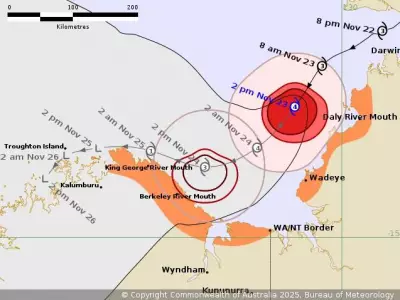
A major clean energy initiative in New South Wales is facing significant opposition from conservation experts who warn the project could cause permanent damage to sensitive ecosystems and threatened species.
Biodiversity Council Delivers Scathing Assessment
The Biodiversity Council, representing 11 Australian universities, has strongly criticised the environmental impact statement for the multibillion-dollar Hunter Transmission Project. In their recent submission, the council described the proposed route as "very poor from a biodiversity perspective" and raised serious concerns about inadequate environmental safeguards.
The project, which would connect Bayswater and Eraring power stations via a new 500 kilovolt overhead transmission line, is estimated to affect 66 threatened species and seven threatened ecological communities. The council identified that the development would cause significant and irreversible impacts to eight plant species, six animal species, and two ecological communities.
First Nations Concerns and Parliamentary Action
Environmental issues aren't the only concern surrounding the transmission project. The Mindaribba Local Aboriginal Land Council has expressed frustration that their attempts at meaningful consultation regarding ecology and cultural connections were "almost completely ignored". Their submission highlighted that engagement with First Nations culture and heritage had been superficial, focusing mainly on landing pages and factsheets rather than genuine partnership.
Meanwhile, a parliamentary e-petition has been launched seeking to stop the project entirely due to potential "extensive and irreversible environmental damage" caused by the southern corridor through multiple state forests and conservation areas, including Olney State Forest, Watagan State Forest, and Jilliby State Conservation Area.
Balancing Clean Energy Needs with Environmental Protection
Despite their strong environmental criticisms, the Biodiversity Council acknowledged that renewable energy projects represent the only viable solution for reducing climate-harming carbon emissions from electricity production. However, they emphasized this must be achieved while avoiding or minimizing impacts on biodiversity.
"The Biodiversity Council is concerned that this project undervalued biodiversity and did not undertake sufficient avoidance," the submission stated, specifically highlighting significant impacts on Littlejohn's Tree Frog that require immediate attention.
The project has received 173 submissions during public exhibition, with many expressing concerns about environmental, social and cultural impacts. However, it has also attracted support from key stakeholders who recognize its importance for the region's energy transition.
The Committee for the Hunter described the project as "vital infrastructure for the Hunter region and NSW's future" while requesting utmost care to reduce and manage community, environmental and biodiversity impacts. They commended EnergyCo for engaging with communities and stakeholders while encouraging continued consultation and science-based decision making.
An EnergyCo spokeswoman confirmed that submissions are being considered and design refinements are ongoing. "As the Hunter Transmission Project moves into detailed design we will continue to avoid and minimise impacts to the most valuable natural areas wherever possible," she stated, noting that a response to submissions and amendment report will be published in early 2026.
The final route has been refined several times since the project's announcement, with EnergyCo now planning to build more than 89 percent of the infrastructure on mining, energy and government land to reduce environmental impacts.





